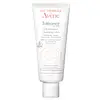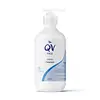What's inside
What's inside
 Key Ingredients
Key Ingredients

No key ingredients
 Benefits
Benefits

 Concerns
Concerns

No concerns
 Ingredients Side-by-side
Ingredients Side-by-side

Water
Skin ConditioningCarthamus Tinctorius Seed Oil
MaskingPetrolatum
EmollientGlycerin
HumectantSodium Laureth Sulfate
CleansingLauryl Betaine
CleansingXanthan Gum
EmulsifyingGuar Hydroxypropyltrimonium Chloride
Skin ConditioningTocopherol
AntioxidantMethylparaben
PreservativePropylparaben
PreservativeSodium Polyacrylate
AbsorbentCitric Acid
BufferingSodium Lauroyl Lactylate
EmulsifyingCeramide EOP
Skin ConditioningCeramide AP
Skin ConditioningCeramide NP
Skin ConditioningPhytosphingosine
Skin ConditioningCholesterol
EmollientEthylhexylglycerin
Skin ConditioningCarbomer
Emulsion StabilisingWater, Carthamus Tinctorius Seed Oil, Petrolatum, Glycerin, Sodium Laureth Sulfate, Lauryl Betaine, Xanthan Gum, Guar Hydroxypropyltrimonium Chloride, Tocopherol, Methylparaben, Propylparaben, Sodium Polyacrylate, Citric Acid, Sodium Lauroyl Lactylate, Ceramide EOP, Ceramide AP, Ceramide NP, Phytosphingosine, Cholesterol, Ethylhexylglycerin, Carbomer
 Reviews
Reviews

Ingredients Explained
These ingredients are found in both products.
Ingredients higher up in an ingredient list are typically present in a larger amount.
Carbomer is a polymer of acrylic acid. Its main role is to create a gel consistency.
A high amount of carbomer can cause pilling or balling up of products. Don't worry, most products contain 1% or less of carbomer.
Glycerin is already naturally found in your skin. It helps moisturize and protect your skin.
A study from 2016 found glycerin to be more effective as a humectant than AHAs and hyaluronic acid.
As a humectant, it helps the skin stay hydrated by pulling moisture to your skin. The low molecular weight of glycerin allows it to pull moisture into the deeper layers of your skin.
Hydrated skin improves your skin barrier; Your skin barrier helps protect against irritants and bacteria.
Glycerin has also been found to have antimicrobial and antiviral properties. Due to these properties, glycerin is often used in wound and burn treatments.
In cosmetics, glycerin is usually derived from plants such as soybean or palm. However, it can also be sourced from animals, such as tallow or animal fat.
This ingredient is organic, colorless, odorless, and non-toxic.
Glycerin is the name for this ingredient in American English. British English uses Glycerol/Glycerine.
Learn more about GlycerinWater. It's the most common cosmetic ingredient of all. You'll usually see it at the top of ingredient lists, meaning that it makes up the largest part of the product.
So why is it so popular? Water most often acts as a solvent - this means that it helps dissolve other ingredients into the formulation.
You'll also recognize water as that liquid we all need to stay alive. If you see this, drink a glass of water. Stay hydrated!
Learn more about Water